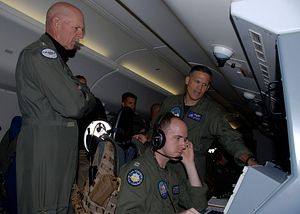Speaking on the sidelines of the Australian American Leadership Dialogue, U.S. Admiral Scott Swift, the commander of the U.S. Pacific Fleet, dismissed rumors that the United States was interested in pursuing new military “bases” and “infrastructure” in either Darwin or Fremantle, Australia. Swift’s remarks come as tensions remain high in the South China Sea, where China has built man-made islands out of submerged maritime features at an unprecedented rate beginning last year. Swift made headlines in late July when he participated in a seven hour surveillance flight over the South China Sea on a U.S. P-8A Poseidon surveillance aircraft, one of his first acts as the commander of the Pacific Fleet after taking over from Admiral Harry Harris.
“As the Pacific Fleet commander I currently see no value of new bases,” Swift told the press in Australia. “We don’t need more infrastructure from a navy point of view.”
“If the entire U.S. Navy was stationed in the East China Sea [and] South China Sea the question I would still get [is] ‘when is the rebalance going to be real, what more can you send to the region,'” Swift continued. As the Sydney Morning Herald notes, the U.S. Pacific Fleet, “comprising five aircraft carrier groups, 200 ships and submarines, 2000 aircraft and a quarter of a million sailors and marines,” already fields considerable naval strength, far above the capabilities of any other regional navy, including China.
Swift’s remarks are sensible and in line with current U.S. policy. Though recent disagreements have emerged between the U.S. Department of Defense and the White House with regard to how far the U.S. should go in challenging China’s newly constructed “islands” in the Spratlys, the current approach has favored coordinating with U.S. allies and partners in Asia to demonstrate a continuing commitment to preserving the principles of freedom of navigation and overflight in the South China Sea. Additional U.S. bases, be they in Australia or in the Philippines, would exacerbate the security dilemma with China and possibly encourage additional militarization of the South China Sea.
To be sure, depending on how Chinese activities in the South China Sea progress later this year and the outcomes of Chinese President Xi Jinping’s historic state visit, the U.S. may reevaluate its approach to preserving the status quo in the region. As last week’s ASEAN Regional Forum summit demonstrated, regional states, including every South China Sea claimant except for China, welcome U.S. involvement in the South China Sea.

































